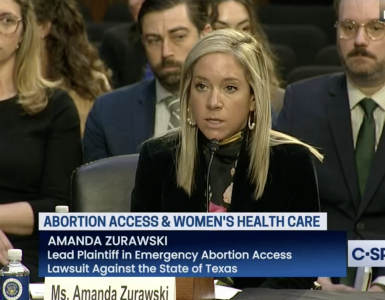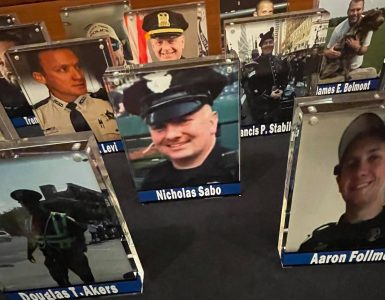A D.C. bridge park spanning the Anacostia River that is starting construction soon could bring gentrification and displacement to communities east of the Anacostia River, residents say, but the developers respond that they’ve safeguarded against these concerns.
The 11th Street Bridge Park, which was conceptualized in 2011 with community input, is planned to begin construction in 2024. The project will sit on the piers and pilings that remained in the river after the city completed its modernization of the 11th Street Bridge complex, which connects eastern Navy Yard and Capitol Hill with Anacostia. Following design and permitting approvals, the project is set to begin in 2024, with a target completion of 2026.
Some residents east of the river worried that the project could follow in the footsteps of New York City’s High Line, opening neighboring Anacostia — an impoverished area of D.C. — to gentrification and displacement.
The 11th Street Bridge Park, which could become the District’s spin on New York City’s High Line, has drawn national attention in part because of its strategy to curb the gentrification and displacement that can come with a project of such magnitude.
The High Line, a public greenspace that runs through neighborhoods on Manhattan’s west side, has been accused by some New York residents of causing gentrification in the project’s neighboring areas. Following the project’s completion, the High Line became a tourist attraction that forced nearby property values to skyrocket, according to an analysis by Kenyon College researchers. Simultaneously, wealthy newcomers have flocked to the neighborhoods close to the High Line, displacing poorer residents.

The bridge park is the brainchild of the nonprofit Building Bridges Across the River. Building Bridges aims to provide people in communities east of the Anacostia River with access to facilities, programs, and partnerships in arts, economic opportunity, education, recreation, and health. Some of its projects include the Town Hall Education Arts Recreation Campus (THEARC) and the Skyline Work
Scott Kratz, senior vice president of Building Bridges and the project’s director, said he and his team have taken a cautious approach to the 11th Street Bridge Park. Kratz said he has consulted hundreds of Ward 8 residents not only on the park’s design but also how Building Bridges could pursue the project without displacing people.
And so the group came up with the Equitable Development Plan, an extensive strategy that would invest $91 million to date to, among other things, fuel nearby economic growth and turn nearby renters into homeowners, said Kratz.
“We just wrapped up a big pilot program with a big consulting firm, Booz Allen, where we provided pro-bono technical assistance to 10 black-owned businesses along a four-block stretch of Good Hope Road,” Kratz said. The technical assistance included helping these businesses create and implement marketing plans, sharpen financial systems, and apply for city and federal grants, he continued.
As for the homebuyer program, it would use funds donated from Geico insurance to help host homebuyer training programs for prospective homebuyers and then provide downpayment and closing costs. These funds would stack on top of a city-funded program that provides low-to-moderate income buyers with up to $202,000 for these costs.
Much of these efforts would be concentrated in nearby Wards 7 and 8 — some of the District’s most impoverished neighborhoods. The annual median household income in Wards 7 and 8 are $49,509 and $47,421, respectively — less than half the average household income in the District — according to data from DC Health Matters, a group of hospitals and community health centers that tracks health data across the city.

This disparity makes neighborhood conservation especially important, said Kratz.
Nearby Ward 8 residents who spoke with The Wash largely approve of the project’s homebuyer program.
“When you look at how D.C. has operated over the years, poor people have been moving east,” said Kimberly Scott, a lifelong Ward 8 resident. “We can’t go much farther east without leaving the city. We need programs like this.”
Overall, the project’s programs have been a success, Kratz said. According to an analysis of the program’s success by the Urban Institute, which studies social and economic policies, the pilot program for local businesses has helped 627 small businesses obtain loans and technical assistance. And of the 786 homebuyers that entered the homebuyer training program, 88 have become homeowners.
Still, these programs aren’t foolproof.
Homeownership is fragile, particularly among low-income communities, Kratz acknowledged as he recalled stories of some low-income condo owners east of the river losing their homes to foreclosure. Building Bridges Across the River hasn’t come up with remedies yet, though the group has toyed with the idea of cash grants for cash-strapped condo associations.
More than that, the bridge park team have seen “an overarching struggle to find affordable homeownership opportunities in the District, particularly in Wards 7 and 8,” according to the Urban Institute analysis, contributing to a declining rate of homeownership through the program from 2018 to 2020.
That this program was years in the making and has begun years before development is important, Kratz said. “Working early, intentionally and in a community driven process, the 11th Street Bridge Park’s goal is to make sure long term residents can benefit from the 11th Street Bridge Park.”
Edward Ryder, advisory neighborhood commissioner for 6B08 who oversees parts of Capitol Hill, is excited about the project.
“Of course, gentrification and displacement are concerns,” Ryder said. But with the work that Building Bridges Across the River has done to “focus on inclusive economic growth and equity,” Ryder believes displacement won’t be much of a problem.
Shani Williams, who lives by the D.C.-Maryland border in Ward 8, said she was originally concerned about the displacement the project could bring. But now, concern has turned into excitement. “It’s about time we make this part of D.C. more pretty,” Williams said. “Look around downtown. Things are changing. We could use something new.”















[…] Source […]